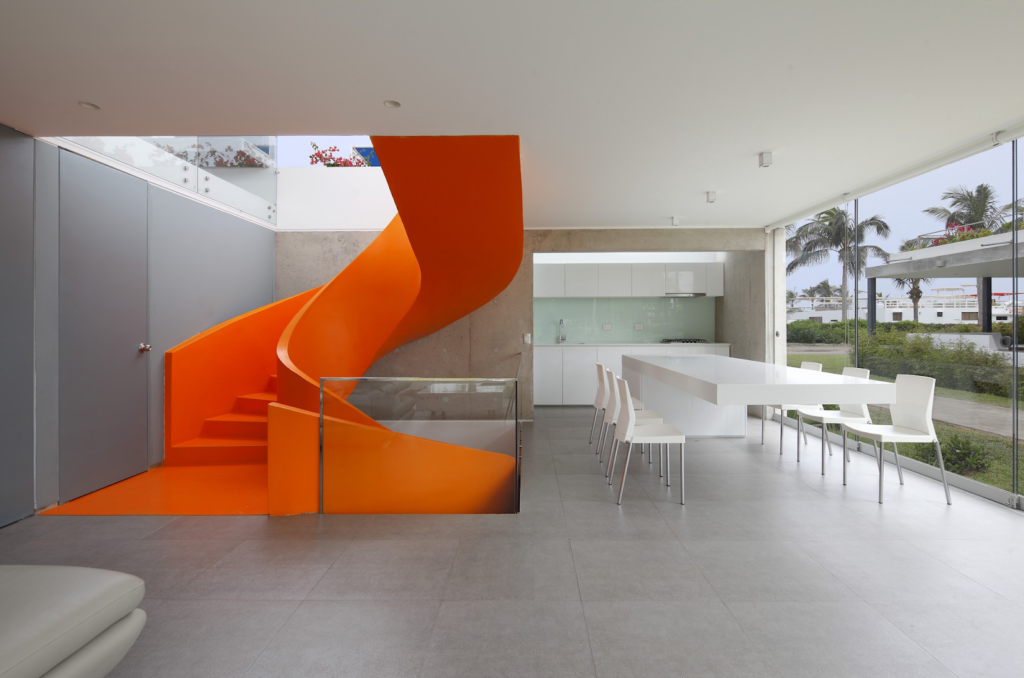Your basket is currently empty!
Beyond Functionality: The Emotional Impact of Architectural Spaces
Architecture is more than just the physical construction of buildings; it has the power to evoke emotions and shape our experiences within spaces. Beyond providing shelter and functionality, architectural design can profoundly impact our emotional well-being, influencing our moods, behaviors, and perceptions. This article delves into the emotional impact of architectural spaces, exploring how design choices, spatial qualities, and sensory experiences can evoke feelings of joy, serenity, excitement, or even nostalgia. By understanding the emotional aspects of architecture, designers can create spaces that uplift, inspire, and deeply resonate with the human spirit.

Creating a Sense of Serenity: Tranquil and Harmonious Spaces
Architectural spaces that evoke a sense of serenity have a calming effect on occupants. These spaces often feature simplicity, balance, and a harmonious composition. Natural light, muted color palettes, and the use of natural materials can contribute to a serene atmosphere. Thoughtful consideration of acoustics and the integration of nature elements further enhance the tranquility of a space. Serene environments offer a respite from the chaos of everyday life, promoting relaxation, contemplation, and a sense of well-being.
Eliciting Joy and Excitement: Vibrant and Dynamic Designs
Architectural spaces can be designed to evoke joy and excitement, energizing and uplifting the human spirit. Bold and vibrant colors, playful forms, and interactive elements can create a sense of dynamism and delight. Attention to spatial sequencing and the creation of unexpected visual experiences can add an element of surprise and anticipation. Spaces that evoke joy and excitement inspire creativity, foster positive emotions, and encourage social interaction.
Nurturing a Sense of Belonging: Inclusive and Welcoming Environments
Architecture plays a vital role in creating inclusive and welcoming environments that foster a sense of belonging. Thoughtful design considerations such as accessibility, flexibility, and cultural sensitivity ensure that spaces accommodate diverse needs and backgrounds. The use of materials and architectural features that resonate with the local culture or community can also contribute to a sense of identity and belonging. Inclusive spaces promote social connection, encourage interaction, and enhance overall well-being.
Stimulating the Senses: Sensory-rich Experiences
The sensory qualities of architectural spaces greatly influence our emotional responses. Engaging all the senses—sight, sound, touch, smell, and even taste—creates a multisensory experience that enhances our connection to a space. Thoughtful lighting design, the use of textures, materials, and fragrances, and the incorporation of nature elements can stimulate the senses and evoke a range of emotions. By designing spaces that engage multiple senses, architects can create immersive experiences that leave a lasting impact.
Inspiring Nostalgia and Memory: Architectural Timelessness
Architecture has the unique ability to evoke nostalgia and trigger memories. Buildings that possess timeless qualities or incorporate elements of historical significance can transport occupants to a different era, stirring feelings of familiarity, nostalgia, and a connection to the past. Preservation and adaptive reuse of historic buildings can preserve cultural heritage and provide a sense of continuity and rootedness in a rapidly changing world. Nostalgic spaces evoke emotions of comfort, nostalgia, and a sense of belonging to a larger narrative.
Architectural spaces have the capacity to transcend mere functionality, touching us on an emotional level. By creating serene, joyful, inclusive, sensory-rich, and nostalgic environments, architects can shape our experiences, uplift our spirits, and enhance our overall well-being. The emotional impact of architecture influences our moods, behaviors, and perceptions, creating spaces that resonate with our deepest emotions. By understanding the power of architecture to evoke emotions, designers can create spaces that inspire, nurture, and connect us to our surroundings. Through thoughtful design choices, architects have the opportunity to enrich our lives and create meaningful spaces that leave a lasting emotional imprint.
Leave a Reply